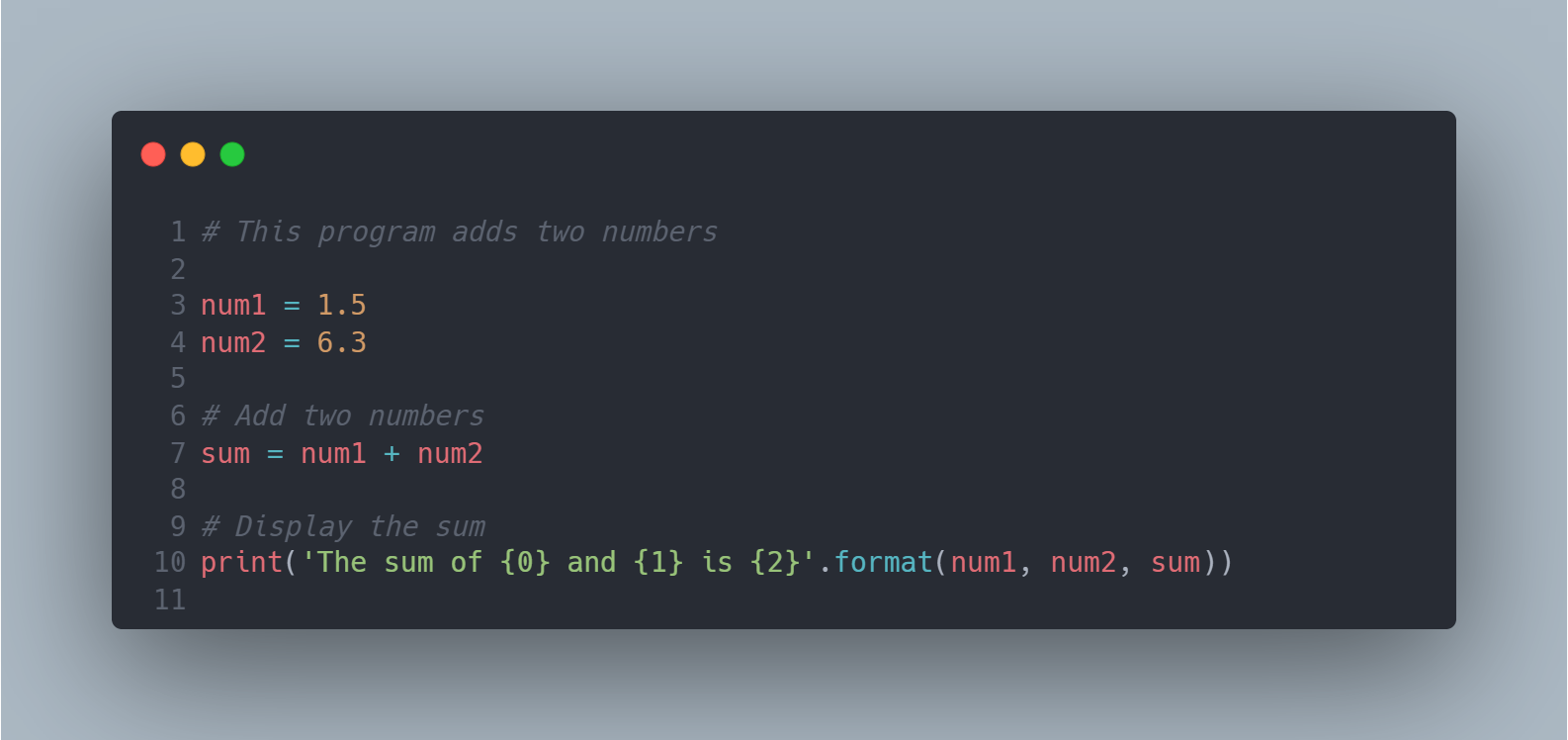Example 1: Add Two Numbers Program
1
2
3
4
5
6
7
8
9
10
# This program adds two numbers
num1 = 1.5
num2 = 6.3
# Add two numbers
sum = num1 + num2
# Display the sum
print(f'The sum of {num1} and {num2} is {sum}')
Output: The sum of 1.5 and 6.3 is 7.8
Example 2: Add Two Numbers Provided by User
1
2
3
4
5
6
7
8
9
10
# Store input numbers
num1 = input('Enter first number: ')
num2 = input('Enter second number: ')
# Add two numbers
sum = float(num1) + float(num2)
# Display the sum
print('The sum of {0} and {1} is {2}'.format(num1, num2, sum))
Output: The sum of 1.5 and 6.3 is 7.8
Example 3: One Liner Add Two Numbers
1
2
3
4
5
print(f'The sum is {float(input("Enter first number: ")) + float(input("Enter second number: "))}')
# or
print('The sum is %.1f'%(float(input('Enter first number: ')) + float(input('Enter second number: ') )))
Output: The sum is 7.8
Although this program uses no variable (memory efficient), it is harder to read.
